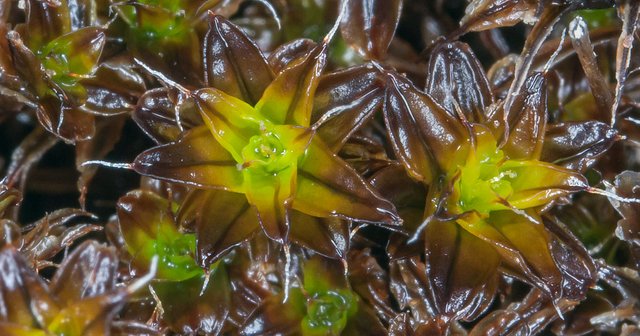A terrestrial plant that could grow on Mars/Una planta terrestre que podría crecer en Marte

Source
In the unstoppable race to colonize the red planet, a few days ago we commented on NASA's CHAPEA (Crew Health and Performance Exploration Analog) project to simulate life on Mars and now it seems that recent scientific research has revealed that a plant that grows on Earth under extreme conditions could probably grow on Mars.
En la imparable carrera para colonizar el planeta rojo, hace unos días comentábamos sobre el proyecto CHAPEA (Crew Health and Performance Exploration Analog) de la NASA de simulación de la vida en Marte y ahora parece que una reciente investigación científica, ha revelado que una planta que crece en la Tierra en condiciones extremas podría probablemente crecer en Marte.
This is the moss Syntrichia caninervis, also known as rock moss or dog hair moss, it is a species of desert moss native to extreme regions such as the Himalayas, the Alps and Antarctica, which has captured the attention of the scientific community for its extraordinary ability to survive in extreme environmental conditions.
Se trata del musgo Syntrichia caninervis, también conocido como musgo de roca o musgo de pelo de perro, es una especie de musgo desértico originaria de regiones extremas como el Himalaya, los Alpes y la Antártida, que ha cautivado la atención de la comunidad científica por su extraordinaria capacidad para sobrevivir en condiciones ambientales extremas.

Source
Syntrichia caninervis has demonstrated remarkable resistance to ionizing radiation, even at levels much higher than those on Earth, can withstand prolonged periods of drought, losing up to 98% of its water content and then reviving when rehydrated and can withstand temperatures ranging between -70°C and 80°C.
Syntrichia caninervis ha demostrado una notable resistencia a la radiación ionizante, incluso a niveles mucho más altos que los de la Tierra, puede soportar períodos prolongados de sequía, perdiendo hasta el 98% de su contenido de agua y reviviendo luego cuando se rehidrata y puede soportar temperaturas que oscilan entre -70°C y 80°C.
Unlike most plants that require carbon dioxide for photosynthesis, Syntrichia caninervis can fix nitrogen from the air, allowing it to carry out photosynthesis even in environments with low levels of CO2 which, together with everything exposed in the previous paragraph, makes this moss an ideal candidate to take to Mars.
A diferencia de la mayoría de las plantas que requieren dióxido de carbono para la fotosíntesis, Syntrichia caninervis puede fijar nitrógeno del aire, lo que le permite realizar la fotosíntesis incluso en ambientes con bajos niveles de CO2 lo que, unido a todo lo expuesto en el párrafo anterior, convierte a este musgo en un candidato ideal para llevar a Marte.

Source
If Syntrichia caninervis can be grown on Mars it could have significant implications for space exploration and future colonization of the red planet, the moss could produce oxygen through photosynthesis, creating a breathable atmosphere for humans inhabiting Mars and could be used as basis for the development of space agriculture systems.
Si se logra cultivar Syntrichia caninervis en Marte podría tener implicaciones significativas para la exploración espacial y la colonización futura del planeta rojo, el musgo podría producir oxígeno a través de la fotosíntesis, creando una atmósfera respirable para los humanos que habiten Marte y podría ser utilizado como base para el desarrollo de sistemas de agricultura espacial.
Additionally, moss growth could serve as a bioindicator of the health of the Martian environment, providing information on air, soil and water quality. This species could even be the key to initiating the terraforming of Mars and creating a habitable environment for humans in the medium-long term future.
Además, el crecimiento del musgo podría servir como bioindicador de la salud del medio ambiente marciano, proporcionando información sobre la calidad del aire, el suelo y el agua, incluso esta especie podría ser la clave para iniciar la terraformación de Marte y crear un entorno habitable para los humanos en un futuro a medio-largo plazo.
More information/Más información
https://www.theguardian.com/science/article/2024/jun/30/scientists-find-desert-moss-that-can-survive-on-mars
Hi, @mauromar,
Thank you for your contribution to the Steem ecosystem.
- Explore Steem using our Steem Blockchain Explorer
- Easily create accounts on Steem using JoinSteem
- Delegate to @ecosynthesizer and wtiness vote @symbionts to support us.
Congratulations, your post has been upvoted by @dsc-r2cornell, which is the curating account for @R2cornell's Discord Community.